- Villa search

- Canaries
- Caribbean
- Croatia, Bulgaria and Hungary
- Cyprus
- Florida
- France and Corsica
- Greece
- Italy
- Lakes and Mountains
- Madeira
- Malta and Gozo
- Portugal
- South Africa
- Spain - Balearics
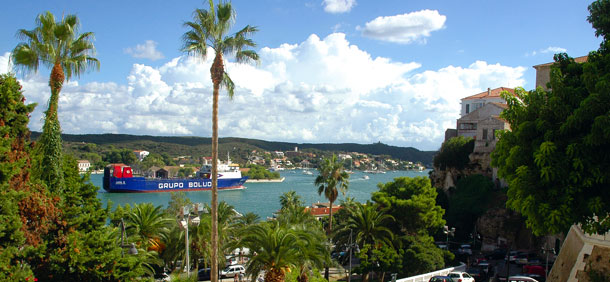
Related articles
Menorca millionaires… for a week!
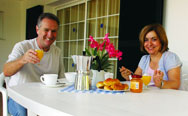
Jos Simon chose Mallorca’s smaller Balearic neighbour for a holiday to celebrate his wife’s retirement. It was a choice they didn’t regret
I don’t know what I expected. A little bit of Spain, I suppose. But as we descended into Menorca's Mahon airport over drystone walls and green fields basking in the evening sun, it looked more Yorkshire Dales than Iberian peninsula.
It was dark when we got to our villa in Binibeca, on the island’s south coast. We had toast and a glass of wine (oh, all right, the whole bottle) from the welcome pack that awaited us. We watched the BBC late news (satellite’s a wonderful thing), then went to bed. We woke the next morning to the sound of cicadas; pool-reflected sunlight dappled the bedroom ceiling.
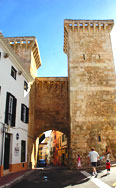
Mediaeval gate on the Plaça Bastió
“Beats working,” my wife said, and went off to fix breakfast. We lay on our sun loungers, swam in the pool, then drove down to the village for a coffee and to buy in supplies.
Binibeca Vell is extraordinary. Built in the 1970s, it’s a modern take on a traditional Spanish fishing village – all whitewash, cobbles, balconies and alleys, with shops and restaurants, courtyards and boats. We stopped off at the beach to watch the surf roll in and have a lunchtime drink.
Next day, the 15-minute drive into Maó (the local spelling for Mahon) took us along narrow country lanes with the island’s typical drystone walls threatening the car’s paintwork on either side. We parked under the Plaça S’Esplanada and walked down into the city.
Exploring Maó
Maó is spectacularly set along cliffs overlooking one of the best natural harbours in the Mediterranean, but with a population of only 25,000 it has the feel of a market town.
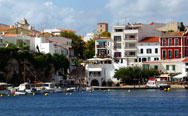
Es Castell harbour
We used little Plaça Colon – all palms and cafés – as our base. A short circular walk took us past Plaça Bastió, with the last remaining mediaeval gate, then along Carrer Isabel II, with its traditional houses, to the church of St Francis and the Museum of Menorca.
On the way back towards the towering Santa Maria, we had a quick canter around the Claustre del Carme – once the cloisters of the massive Església del Carme, now a spacious fruit and vegetable market – then walked past the fish market down the sweeping hill to the quayside. This is the most beautiful area of the city, where it spills down a cleft in the cliff face to the water, with old buildings clinging to the rocks and boats sliding past on their way to the open sea.
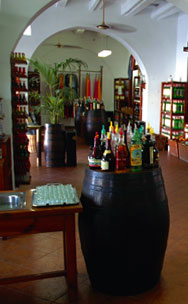
Xoriguer gin factory
At the quayside, we boarded one of the glass-bottomed catamarans that ply the long inlet on which the capital stands. As we chugged past Golden Farm, where Nelson once stayed, followed by the forbidding walls of Menorca’s quarantine island, the Isla del Lazareto, and the even more sinister fortifications of La Mola. On the way back to Maó, we saw the lovely harbour of Es Castell (built by the British as Georgetown), and the Illa del Rei with its ruined 18th century British hospital.
Back on dry land, we headed for the Xoriguer gin factory just along the quay, expecting a long tour and a short drink. Quite the opposite. There was no tour, and as much drink as you could keep down, with thousands of bottles of flavoured gin to try. And it’s free! Waiting for the fumes to clear, we watched sailors mending nets, then climbed back up to the town. Right along the escarpment, people sat and enjoyed the view.
home | destinations and editorial | villa search | property for sale | car hire | flights | services
villaseek blog | contact villaseek | links and resources | advertise your villa© Dune Root Ltd and Villaseek.com 2012 - Caribbean
- Canaries